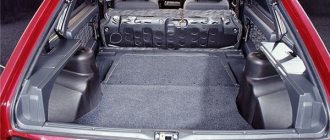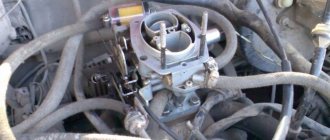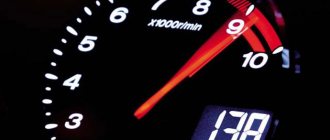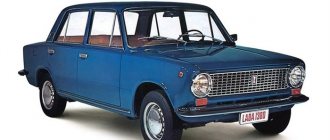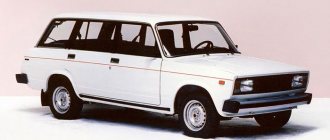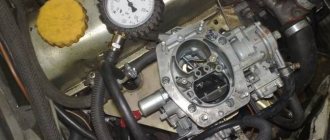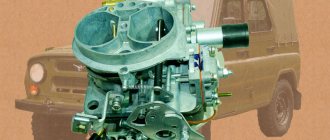Among the quality technical characteristics of any car, an important place is occupied by how many liters of fuel it uses. That is why car enthusiasts were struck by the indicator describing the fuel consumption of the VAZ 2109, developed in 1987. The paradox is that an SUV is distinguished by its reliability, ease of maintenance and operation, but surprises with its inefficiency. We will try to explore the reasons for this situation and the significance of the fuel supply system for it.
Gasoline consumption indicators
First, it would be advisable to determine how the VAZ 2109 gasoline consumption per 100 km changes, depending on the type of liquid.
Let us note the following indicators:
- With A-76 - 0.60 l.
- With A-80 - 10.1 liters.
- With A-92 - 9.0 liters.
- With A-95 - 9.25 liters.
- With A-95 Premium - 8.4 liters.
- When using propane or butane - 10.1 liters.
| Engine | Consumption (highway) | Consumption (city) | Consumption (mixed cycle) |
| 1.1 | 7.9 l/100 km | — | — |
| 1.3 73 hp | 7 l/100 km | — | — |
| 1.5 68 hp | 5.7 | 8.7 | 7.7 |
| 1.5i 79 hp | 5.7 | 9.9 | 7.7 |
| 1.6 | 5.6 | 9.1 | 7.7 |
| 1.3 140 hp | 7 | 12.5 | 10 |
Description and technical characteristics of the VAZ-2109 car
Cars with a 5-door hatchback body began to be produced in 1987.
... about the model parameters
Initially, the plant offered versions with 1.3 and 1.5 liter carburetor engines for the domestic market, and a model with a 1.1 liter engine was assembled for export.
In the early 90s, the body and interior were modernized, and already in 1995 the first commercial samples appeared with a 1.5 liter gasoline unit with a GM injection system. Car production continued until 2011 (in Ukraine), and the equipment was equipped with an 8-valve VAZ-11183 engine with a displacement increased to 1.6 liters.
The vehicles were equipped with a manual transmission with 4 or 5 forward gears and a cylindrical main pair. Torque was transmitted to the front wheels with MacPherson struts and coil springs.
A torsion beam with shock absorbers and drum brakes was used at the rear (discs at the front). Panels molded from plastic were widely used in interior decoration. The vehicle is equipped with rack and pinion steering (no power assist).
Brief technical characteristics of the VAZ-2109:
- body length - 4006 mm;
- width without mirrors - 1650 mm;
- height (on standard tires 165/70R13) - 1402 mm;
- ground clearance - 165 mm;
- wheelbase - 2460 mm;
- curb weight - 945 kg;
- load capacity - 425 kg.
The VAZ-2109 was equipped with a manual gearbox.
Reasons for increased costs
There are a number of factors that determine the fuel consumption of a UAZ. They can be divided into three groups, among which are those that depend on the owner himself, the faulty technical condition of the parts or the type of flammable liquid. The influence of the last factor has already been mentioned, so we will focus on others.
The car is not working properly
The average gasoline consumption of the VAZ 2109 per 100 km is significantly influenced by the factors of incorrect carburetor settings, stuck needle and fuel pump (increase by an average of 4 liters). An insufficiently warmed up engine increases consumption by another one and a half liters.
Over-tightened bearings or incorrectly adjusted wheel alignment increase consumption by 15 percent.
Inappropriate spark plug spacing, faulty thermostat, reduced engine compression add another 10%.
Driving method of VAZ owner
The fuel consumption of 2109 per 100 km is also affected by the owner’s driving style - the higher the speed of the SUV, the greater the volume of liquid leaving the tank. When you turn on the headlights, the overall consumption rate increases by 10 percent, and flat VAZ tires have the same effect. When installing a trailer, gasoline consumption increases by another 60 percent.
Solex carburetor. How to reduce consumption by selecting jets
Fuel consumption on Lada Vesta
This is a fairly simple and effective way to increase the efficiency of a gasoline engine. The essence of the method is to select fuel jets for the main dosing system. The jet is selected only for the first chamber and the idle system is adjusted.
- The engine warms up to operating temperature (about 90 degrees).
- A bottle of gasoline is installed under the hood. The suction fitting of the fuel pump is disconnected from the fuel hose and connected to the bottle with another hose.
- A control section is driven through at an optimal speed of 60-70 km/h and the fuel level in the bottle is measured.
- The carburetor cover is removed, the jet is changed to another, smaller cross-section (for example, 107.5 to 105). After this, the used fuel is measured again at the control section. At the same time, the dynamics of the car and the appearance of dips when pressing the accelerator are carefully monitored.
- In a normal situation, you can change the jet to an even smaller one. When failures occur, the experiments are stopped. After this, the idle speed is adjusted.
- The idle fuel jet is changed to a similar one, but with a larger cross-section (for example, 40 to 42), the speed is adjusted, and a test run is performed.
- If, as a result of the adjustment, the dips disappear, the adjustment was successful; if not, the idle jet is changed to an increased one and the race is carried out again.
The result of all these manipulations should be stable operation of the engine at idle, no dip in the gas pedal when starting and driving. The main result is a reduction in fuel costs.
Using fuel with a VAZ carburetor
The amount of substance used depends directly on how the modification of a number of UAZ cars works - on a carburetor or on an injector.
First, let’s determine the fuel consumption of the VAZ 2109 carburetor, since it is believed that this type of system has the highest consumption:
- 2109 fuel costs in the city are 8-9 liters per 100 km;
- gasoline costs on the highway - 6-7 liters per 100 km, at a speed of 90 km/h;
- gasoline costs on the highway are 7-8 liters per 100 km, at a speed of 120 km/h.
Malfunction of valves or flaps in a VAZ
One of the main factors in increasing the indicator is a closed or not fully open air damper. You should always check whether it is in the correct position - the handle is facing the owner, and the part itself is in a vertical position. The same problem with an improperly closed solenoid valve or fuel nozzle leads to increased fuel costs for VAZ. If the sealed mode of the needle valve is violated, excess portions of liquid enter the cylinders.
Problems with EPHH
If the XX system jets have a diameter that is too large, then too concentrated, supersaturated oil will enter the combustion chamber. Their contamination also causes increased consumption and requires immediate cleaning. An even more important factor is the breakdown of the forced idle economizer, which requires immediate repair.
Breakdowns causing increased consumption
The VAZ carburetor engine begins to require a lot of gasoline when there are malfunctions of the following parts.
- Problems with the power system (needles, carburetor jets, fuel pump).
- Wheel hub too tight.
- Broken camber - toe.
- The spark plug gaps are broken.
- Faulty thermostat.
- Low compression (compression) in the cylinders.
- Tire pressure is below normal.
- The ignition timing is incorrect.
Deviations in the internal balance of the carburetor result in up to 50 additional percent loss of gasoline. An increase in flow rate can cause misalignment of the needle valve needle, incorrect position of the main fuel jet, idle jet, or throttle valve. You should not overdo it when tightening the wheel hubs. In this case, the wheel becomes more clumsy, and a lot of force will be required to turn it at a certain angle. When driving in neutral gear, heavily tightened hubs stop the car from inertia ahead of time. As a result, up to 15% “overtime” fuel may be required.
In order not to waste another +15% of fuel, you definitely need to check the wheel alignment. This is the name given to the deviation of the wheel from the vertical plane of its installation. Due to the collapse of the wheel, the car needs more fuel to travel a particular section of the road.
If the spark plugs are not gapped correctly, the spark will not be strong enough. This leads to poor ignition of the combustible mixture. As a result, another 10% of fuel is consumed.
If the thermostat is broken, the engine does not reach the required operating temperature, which prevents all system mechanisms from working at full capacity. The system is forced to compensate for deviations from the optimal operation of the mechanisms with an additional amount of gasoline (up to 10%).
Compression (the amount of pressure in the piston at the end of the compression stroke) for the VAZ 2109 should be in the range of 9.5–13 atmospheres. If deviations from the norm occur, the cylinder walls and compression rings wear out. Over time, this adds up to 10% to costs.
The combustion efficiency of the combustible mixture is also affected by the ignition timing. If it is incorrectly set, a spark is formed when the crankshaft is in the wrong position, and the resulting mixture does not burn 100 percent. And to maintain a given power, the engine requires more fuel. According to measurements, a deviation from the angle of 1 degree causes an increase in gasoline costs by 1 percent.
Overconsumption when equipped with an injector
It is worth noting that when changing the fuel supply system, the excess use of gasoline is not less, but has a number of other reasons.
Therefore, the fuel consumption of the VAZ 2109 injector corresponds to the following indicators:
- fuel consumption in the city is 7-8 liters per 100 km
- Gasoline consumption standards for the Lada 2109 on the highway are 5-6 liters per 100 km, at a speed of 90 km/h
- fuel consumption on the highway at a speed of 120 km/h - 8-9 liters per 100 km
Failure in the VAZ control system
Any interruptions in the electronic equipment of the car lead to the fact that the real fuel consumption on the injection VAZ 2109 is growing rapidly. If the temperature, oxygen, or mass air flow sensors do not work correctly, the electronic control unit cannot adequately respond to changes. This provokes a sharp deterioration in the fuel situation.
Reduced pressure and injector failure in a VAZ
A decrease in pressure in the fuel system leads to an immediate decrease in the power of a VAZ vehicle, which increases the period of engine operation at high speeds. Damage to the injector itself immediately increases fuel consumption. To avoid this, you need to periodically clean the injectors.
How to drive Lada 2109 economically
Identifying breakdowns using the consumed displacement is very useful, but more often we are faced with another question: how to improve your driving so that as little fuel as possible is wasted. Indeed, if the car is in full working order, up to 50% of fuel consumption is due to driving style.
The most optimal driving style for low consumption is a smooth, measured movement. There is no need to accelerate or brake suddenly. You need to maintain the speed at 2500 rpm. In the summer, when driving down a mountain or simply accelerating the car, you can turn on neutral gear and roll at idle speed. During such a movement, the consumption of the VAZ 2109 is close to zero.
The level of tire pressure significantly affects the number of liters of gasoline consumed. The pressure in the wheels of the Lada Samara must be at least 2 atmospheres on the front axle and at least 1.9 atmospheres. - on the rear. Without pumping up the tires, you can waste up to 10% of additional fuel.
We must not forget in the cold season that the car has a carburetor. And the carburetor design involves warming up the engine before driving in cold weather. If you immediately start the engine and set off, the engine will immediately not be able to work at full power, and you will put full pressure on the pedal. In order for the engine to be “pulled” into operation, it will need to “suck in” additional fuel. This can account for up to 20% of overruns.
Additional fuel consumption of the VAZ 2109 carburetor appears when driving with the headlights on. Headlights are a consumer of electric current, the generator needs to generate additional charge, and it becomes harder for the motor to rotate the generator. This results in increased consumption. And this applies not only to headlights.
Electricity consumers require fuel when driving. Consumption is also affected by headwinds, vehicle overload and the quality of the fuel used.
VAZ 2109, injector, 1.5 l, 8 valves. Consumes a lot of gasoline, 7 liters per 20 km. The thermostat died, the car heats up to a maximum of 70 degrees. Can the car consume so much because of the thermostat?
When it's cold, he fills the candles and lights them up. You warm it up, screw in the spark plugs, start it, it runs for about 5 seconds and stalls. The candles are flooded again. And if you start it, the car starts, warms up a little and works as if nothing had happened. It doesn't eat, but it still eats a lot. What could it be?
Russia
Fuel consumption Lada 2109 restyling 1991, hatchback 5 doors, 1st generation
04.1991 — 08.2006
| Modification | Fuel consumption, l/100 km | Fuel used |
| 1.1 l, 54 hp, gasoline, manual transmission, front-wheel drive | 8,2 | Gasoline AI-92 |
| 1.5 l, 68 hp, gasoline, manual transmission, front-wheel drive | 8,6 | Gasoline AI-92 |
| 1.3 l, 64 hp, gasoline, manual transmission, front-wheel drive | 8,6 | Gasoline AI-92 |
| 1.5 l, 75 hp, gasoline, manual transmission, front-wheel drive | 8,7 | Gasoline AI-92 |
| 1.5 l, 73 hp, gasoline, manual transmission, front-wheel drive | 8,7 | Gasoline AI-92 |
| 1.5 l, 71 hp, gasoline, manual transmission, front-wheel drive | 8,7 | Gasoline AI-92 |
| 1.5 l, 70 hp, gasoline, manual transmission, front-wheel drive | 8,7 | Gasoline AI-92 |
| 1.5 l, 69 hp, gasoline, manual transmission, front-wheel drive | 8,7 | Gasoline AI-92 |
| 1.5 l, 72 hp, gasoline, manual transmission, front-wheel drive | 9,9 | Gasoline AI-95 |
| 1.5 l, 78 hp, gasoline, manual transmission, front-wheel drive | 10,0 | Gasoline AI-95 |
| 1.3 l, 140 hp, gasoline, manual transmission, front-wheel drive | 12,5 | Gasoline AI-95 |
Fuel consumption Lada 2109 1987, hatchback 5 doors, 1st generation
03.1987 — 08.1993
| Modification | Fuel consumption, l/100 km | Fuel used |
| 1.1 l, 54 hp, gasoline, manual transmission, front-wheel drive | 8,2 | Gasoline AI-92 |
| 1.3 l, 68 hp, gasoline, manual transmission, front-wheel drive | 8,6 | Gasoline AI-92 |
| 1.3 l, 64 hp, gasoline, manual transmission, front-wheel drive | 8,6 | Gasoline AI-92 |
| 1.5 l, 73 hp, gasoline, manual transmission, front-wheel drive | 8,7 | Gasoline AI-92 |
| 1.3 l, 140 hp, gasoline, manual transmission, front-wheel drive | 12,5 | Gasoline AI-95 |
FIREBALL 02/27/2010, 21:05
I have long noticed that gasoline is somehow quickly consumed. I measured the consumption (the tank of the 99 seems to be exactly 40 liters). It turned out to be 15 liters per hundred, taking into account the fact that during this hundred I sit in the yard in a car with the engine running for about 2-2.5 hours. Based on the calculation that about a liter per hour is consumed at idle, then the consumption per hundred without “get-togethers” is approximately 13 liters. As far as I know, according to the passport it should be from 7 to 10 liters per hundred, depending on driving. When I was at the service center I also checked the CO-CH. They said that they were normal. The spark plugs are now iridium, I measured them with them. There shouldn't be any problems with combustion. When I did the diagnostics in the summer, they said it was very good. old firmware. Perhaps that's the problem. A friend has a VAZ-2108 with the same engine. Consumption is 8-9 liters per hundred.
What could be the problem?
PS: A friend gave me a ProSport zero-resistance filter today. I set it for myself, fuel consumption, they say, with them increases, but not by much. I took measurements without it.
Europe
Fuel consumption Lada 2109 restyling 1991, hatchback 5 doors, 1st generation
04.1991 — 12.2011
| Modification | Fuel consumption, l/100 km | Fuel used |
| 1.5 l, 71 hp, gasoline, manual transmission, front-wheel drive | 7,5 | Gasoline AI-92 |
| 1.3 l, 63 hp, gasoline, manual transmission, front-wheel drive | 8,6 | Gasoline AI-92 |
| 1.5 l, 78 hp, gasoline, manual transmission, front-wheel drive | 10,0 | Gasoline AI-95 |
| 1.5 l, 71 hp, gasoline, manual transmission, front-wheel drive | 10,0 | Gasoline AI-95 |
With engine VAZ-2111-80 1.5 injector © Consumption VAZ 21099 with injector
However, you have to pay for the pleasure, both in increased fuel consumption and in the price of the car itself, cars with 4WD drive type are more expensive than other options. When the ignition timing is correctly set, all indicators of engine performance, throttle response, power, idling, and energy consumption are within normal limits.
| R13 | R14 | R15 | |
| Where are they located? | "Kalina", "Granta" with an eight-valve engine | “Priora”, “Kalina” (eight- and sixteen-valve engines), “Lada Granta” and “Granta Liftback” - only for sixteen-valve engines | "Granta Sport" and "Kalina Sport" |
| Peculiarities | Less anther | Same size as boot | Installed only on sports versions of cars |
| Width | 250 mm | 280 mm | 380 mm |
| Acceptable wheel size | R13 and more | R14 and more | R15 and more |
Owner reviews
“An excellent car, especially for Russian roads. In appearance, the car seems small, but inside there is a lot of space for both passengers and various cargo. I use the car mainly for work: during the day I deliver goods to stores, and in the evenings I work part-time as a taxi driver. The car performs well in both directions. The interior is quite comfortable, the seating is comfortable, but the equipment is rather weak even on a model released in the 21st century. Everything is assembled with high quality, reliably, for many years to come, but there is practically no sound insulation. On the one hand, this is a plus, since you can enjoy the sound of the engine when driving along the highway, but it quickly gets boring. I plan to solve this problem soon. In the city there are no particular problems in using it, since the car has good handling, and the whole suspension as a whole. But I was unlucky with one. My car has high consumption, although others do not have such problems. I spend about 10 liters,” writes Valery from Ufa.
“This is my first car after getting my license. I don’t really like it in stock, but I plan to make it for myself. I'll paint it and make body kits. The salon is still more or less here, but I’ll also create something. I’ll re-sew it into leather, the tidy into Alcantara, and I’ll assemble everything better. Since I plan to drive fast, I will also do some work on the engine. Stock is very weak for its volume. But the gas mileage is very decent, even on par with foreign cars. I have never had to spend more than 9 liters in the city, although I drive often and quickly,” Alexander from Voronezh left this review about the car.
“My father gave me this car. He bought a foreign car for himself, saying that I should gain experience in driving a domestic car. Once you learn how to drive it, you can drive anything. At first, the controls seemed very difficult to me, since there was nothing at all that would make driving easier. But then I got used to it, and even began to like it. The car is very decent, well suited for the city. There is a lot of space inside, it is comfortable to sit. The only bad thing is that over time this engine has become too weak for me, because I want to go on the track and enjoy the speed. But it has a low consumption, which is only 8 liters,” wrote Maxim from Kaliningrad.
“Many friends advised me to take a nine, but not a simple one, but with a larger engine, since it is much better in everything. But somehow I didn’t particularly like her. I was hoping for something more comfortable and technologically advanced. The car was produced in 2000, and it is equipped with technologies from the eighties. The engine is frankly weak, it barely pulls for its volume. I am glad that at least it consumes little fuel, no more than 9 liters. Perhaps, if various modifications are made, the car will give a pleasant driving experience, but so far this is not happening,” this is a review from Leonid from Lipetsk.
“I bought an improved nine secondhand, because I had long wanted to take it, but as a second car. I plan to carry out a number of various improvements with it and travel to exhibitions, since such cars are very popular. I want to leave only the body from stock, and I’ll wrap that as best I can so that only the outlines are recognizable. For now I drive stock, because I need to earn money for all this. The car itself is not bad, but I couldn’t drive it all the time. The level of comfort is minimal, and the engine is not up to par with foreign competitors. But there is a pleasant bonus - fuel consumption does not exceed 9 liters,” wrote Dmitry from Krasnodar.
“Over the years I have driven many of our cars, but I decided to stop at the VAZ 21093. I always liked the Nine, and here is also a version with a large engine, which shows quite tolerable speed and acceleration. In terms of comfort, the car is no better than previous models and is clearly one step lower than foreign cars, but the sensations and adrenaline from driving cannot be expressed in words. I don’t plan to change the car for another one, since I simply can’t find such an indicator of consumption in the city for this price. My average is 8 liters,” this is a review from Pavel from Yekaterinburg.
Source
